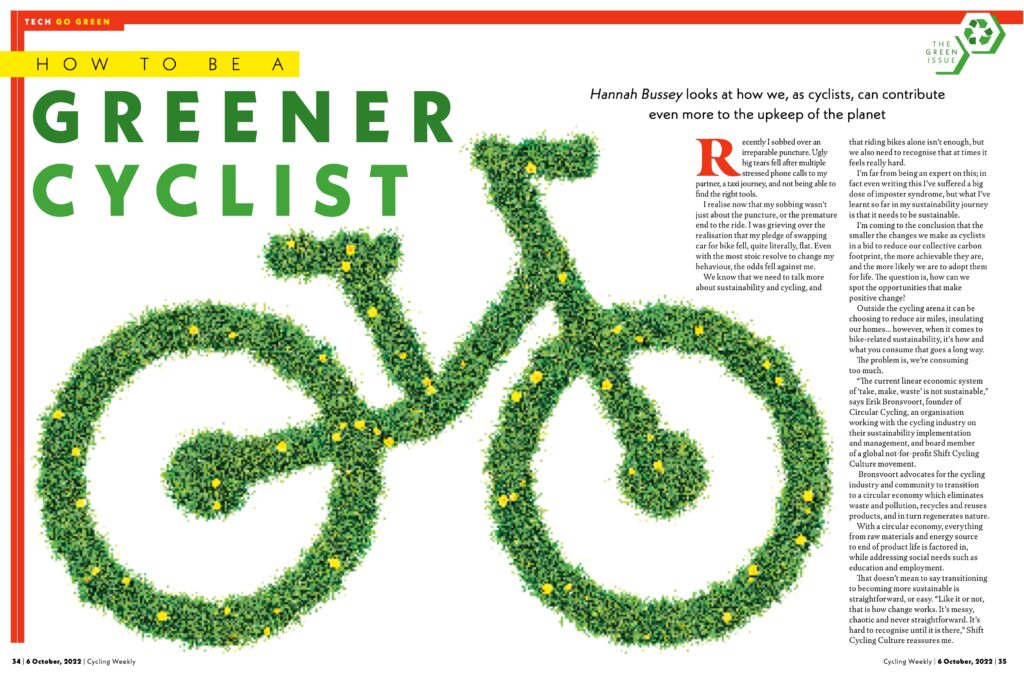Cycling Weekly, October 2022, by Hannah Bussey
How to be a greener cyclist – Hannah Bussey looks at how we, as cyclists, can contribute even more to the upkeep of the planet

Recently I sobbed over an irreparable puncture. Ugly big tears fell after multiple stressed phone calls to my partner, a taxi journey, and not being able to find the right tools.
I realise now that my sobbing wasn’t just about the puncture, or the premature end to the ride. I was grieving over the realisation that my pledge of swapping car for bike fell, quite literally, flat. Even with the most stoic resolve to change my behaviour, the odds fell against me.
We know that we need to talk more about sustainability and cycling, and that riding bikes alone isn’t enough, but we also need to recognise that at times it feels really hard.
I’m far from being an expert on this; in fact even writing this I’ve suffered a big dose of imposter syndrome, but what I’ve learnt so far in my sustainability journey is that it needs to be sustainable.
I’m coming to the conclusion that the smaller the changes we make as cyclists in a bid to reduce our collective carbon footprint, the more achievable they are, and the more likely we are to adopt them for life. The question is, how can we spot the opportunities that make positive change?
Outside the cycling arena it can be choosing to reduce air miles, insulating our homes… however, when it comes to bike-related sustainability, it’s how and what you consume that goes a long way.
The problem is, we’re consuming too much.
“The current linear economic system of ‘take, make, waste’ is not sustainable”
Erik Bronsvoort
“The current linear economic system of ‘take, make, waste’ is not sustainable,” says Erik Bronsvoort, founder of Circular Cycling, an organisation working with the cycling industry on their sustainability implementation and management, and board member of a global not-for-profit Shift Cycling Culture movement.Bronsvoort advocates for the cycling industry and community to transition to a circular economy which eliminates waste and pollution, recycles and reuses products, and in turn regenerates nature.
With a circular economy, everything from raw materials and energy source to end of product life is factored in, while addressing social needs such as education and employment.
That doesn’t mean to say transitioning to becoming more sustainable is straightforward, or easy. “Like it or not, that is how change works. It’s messy, chaotic and never straightforward. It’s hard to recognise until it is there,” Shift Cycling Culture reassures me.
Download the full article ‘How to be a greener cyclist’ here

